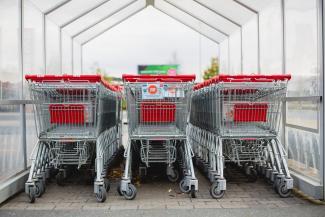
What is Shrinkflation?
Have you heard about a concept called shrinkflation? Recently, I posted a video on the top of "inflation" which talked about the cost of living going up. Well today I'm going to talk about a concept called "shrinkflation".
Shrinkflation: the cost of the product staying the same, but the amount you're getting is going down.
What's interesting is that this concept of shrinkflation has been around for a while, starting well before the Coronavirus pandemic. The reason it's become a hotter topic is because like many things, it's worsened since the pandemic.
Shrinkflation: A growing concern
Shrinkflation is getting worse for three main reasons:
- rising labor costs
- rising ingredient pricing
- soaring demand in shipping
Let's take a look at what's happening with our manufacturers. Costs are going up and there may not be ways to cut costs and maintain quality. So when they take a look at trying to retain their profits they have two options, they can either hike their prices, or they can give you less product for the same price. As an example, did you know that the average package of paper towels has gone from 160 sheets per roll to 140? Did you know that that average bag of Doritos has gone from 9.75 ounces to 9.25 ounces? General Mills, the cereal manufacturing giant, has shrunk its family size box of cereal from 19.3 ounces to 18.1, a drop of 10%! Bacon, we used to call it a pound of bacon, which was 500 grams. Now, the price is still the same but you're only getting 375 grams of bacon in the package.
People are price conscious, but what manufacturers have noticed is that people aren't really weight conscious. They're reducing the amount of weight, but keeping the price the same, which allows them to continue to control their costs and maintain their profits. Unfortunately for the consumer, this means your dollar isn't going as far.
How can a consumer combat shrinkflation?
You may not be able to totally get around this, but you can shift your habits at the grocery store to reduce the impact. One of the ways that you can make your dollars go further at the grocery store is to start being more aware of the cost per unit. Most grocers actually make this easy for you. If you look closely at the shelf where the price tag and product information are posted, many stores will calculate the price per 100 grams or milliliters. This is a great way to shop for weight or volume-based products. You can actually compare apples to apples and make sure that you're getting the best bang for your buck.
What's the bottom line?
What we're really talking about here is cash flow. It is money coming in and money going out, and we want to make sure that we maximize this for you. This allows you to have the cash flow you require to pay down your debt, to save for retirement, or for your kid’s education.
If you have any questions, or want to chat more about how this trend affects you, please reach out to us or follow Jamie on Facebook for more information. Jamie is always happy to provide a second opinion or chat about retirement plans.
Click here to read "What to know about 'shrinkflation' and how to avoid sneaky price hikes" and here for Beware Of 'Shrinkflation,' Inflation's Devious Cousin.
